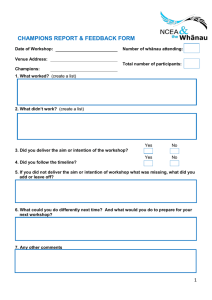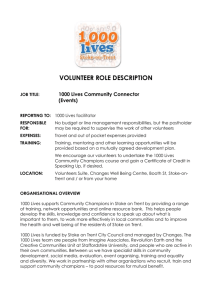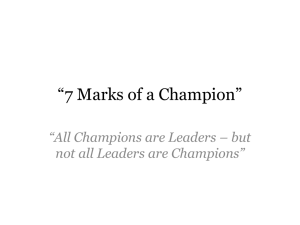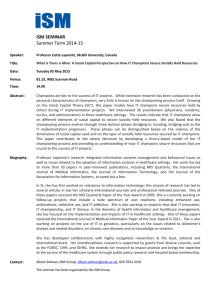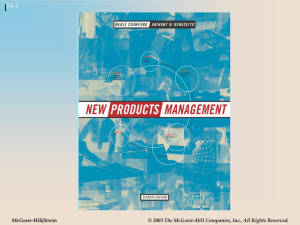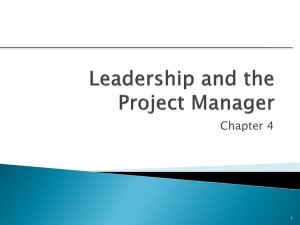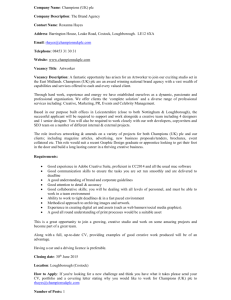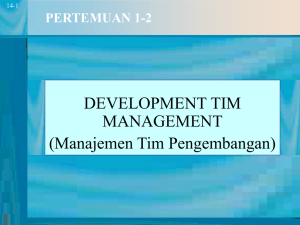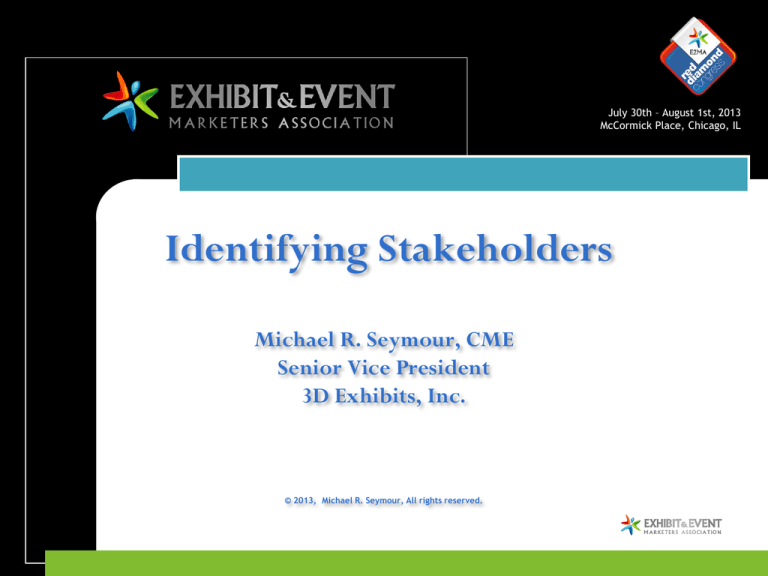
July 30th – August 1st, 2013
McCormick Place, Chicago, IL
Identifying Stakeholders
Michael R. Seymour, CME
Senior Vice President
3D Exhibits, Inc.
© 2013, Michael R. Seymour, All rights reserved.
Identifying Stakeholders
The Program Learning Objectives
Understanding internal and external stakeholders
Identifying other stakeholders
Creating “champions” from your stakeholders
Evolving with your stakeholders
Identifying Stakeholders
stakeholder
stekhol dər / Show Spelled [steyk-hohl-der]
noun
1. the holder of the stakes of a wager.
2. a person or group that has an investment, share, or interest in
something, as a business or industry.
3. Law . a person holding money or property to which two or more
persons make rival claims.
Identifying Stakeholders
stakeholder
Definition: A person, group, or organization that has direct or
indirect stake in an organization because it can affect or be
affected by the organization's actions, objectives, and
policies. Key stakeholders in a business organization include
creditors, customers, directors, employees, government
(and its agencies), owners (shareholders), suppliers, unions,
and the community from which the business draws its
resources.
Identifying Stakeholders
Internal Stakeholders
External Stakeholders
Other
Who are your stakeholders?
Identifying Stakeholders
Typical Key Internal Stakeholders
1. Upper management
2. Marketing
3. Sales
4. Product Managers
5. Your team
6. The company
Identifying Stakeholders
Typical Key External Stakeholders
1. Customers
2. Shareholders
3. Prospects
4. Partners
Identifying Stakeholders
What do your stakeholders mean to your
marketing/trade show programs?
Stakeholders will determine and evaluate
your success, your value to your
organization, and ability to meet the
expectations established for your program.
Identifying Stakeholders
Why are stakeholders important to your
marketing/trade show programs?
They impact your reputation, income,
ability to develop professionally and
defines your position within the company.
Identifying Stakeholders
Determining Stakeholders Expectations
Internal
1) Upper management expectations
2) Direct supervisor expectations
3) Sales/Marketing expectations
4) Others
Identifying Stakeholders
How are you receiving the information
from stakeholders?
Direct access to C level, as well as middle management.
They participate in planning, implementations, etc.
Documents, memo’s handed down
All of the above
Identifying Stakeholders
Determining Stakeholder Expectations
External
1) Customer survey, focus groups
2) Shareholder feedback through C level reporting?
3) Industry research on product needs and desires
Identifying Stakeholders
Every stakeholders goal / objective needs
to be identified, confirmed they are
quantifiable and included as part of your
overall plan.
Identifying Stakeholders
“ Stopping at your exhibit today provided me superior
product knowledge. I was able to learn new techniques,
talk to my peers, and discover what new products coming
in the future from staff. Now my business and I can better
serve our customers today, and prepare them for an even
better tomorrow.”
Potential quote from your Champion
Identifying Stakeholders
Creating and Supporting Your Champions
Internal Champions
External Champions
They all want to be identified as experts,
seek peer recognition and an elevated
respect in their fields. Make them your
greatest assets.
Identifying Stakeholders
When you inform, teach, provide current
and significant product and industry
information validating their interest, they
will be there to support you.
External Champions - Product specialists,
Key Opinion Leaders (KOL), your customers,
the industry.
Identifying Stakeholders
When you validate their goals with
measured success, improved value and
consistent reporting, they will be there to
support you. Everyone wins!
Internal Champions – C Level , Marketing,
Sales, Your supervisor, Product managers,
the company.
Identifying Stakeholders
Keeping Your Program Relevant – Evolve
1. You must continue to learn what is working, and what is
not. Make changes.
2. You must continue to learn what is needed next by your
stakeholders. Change again.
3. You must continue to measure and report the changes and
results.
Identifying Stakeholders
What you provide for your stakeholders?
Information/education.
Product knowledge – today/tomorrow.
Acknowledgement /recognition.
Value
Identifying Stakeholders
What you should receive from stakeholders?
Business opportunities/ financial support.
Commitment / involvement.
Communication
Validation
Value
Identifying Stakeholders
Questions and Answers
Thank you for Attending!
23

